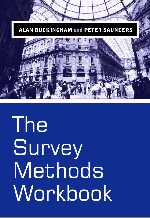
 |
| Home |
|
Smoking Survey files & documentation
Further techniques in data analysis
SPSS updates, links and reader inputs
|
|
Further techniques in data analysis |
| Here you will find a number of additional appendices dealing with more advanced techniques of data analysis than those covered in this book including: Principal Components (Factor) analysis, Path models, Logistic regression and Loglinear modelling. |
|
Appendix F: Principal components (factor) analysis Principal Components Analysis is one of a family of techniques that go under the collective name of factor analysis. Unlike most of the statistical techniques we have encountered in the book, it has nothing to do with causal modelling of data or with hypothesis testing. Principal Components
Analysis, is an exploratory technique. It is used, not to trace
possible causal connections between independent and dependent variables,
but rather to look for underlying patterns (or latent structures)
in our data. More specifically, we use it to create new 'latent'
variables, called factors, out of existing 'observed' ones. |
|
Appendix G: Path models The technique known as 'path analysis' can be considered an extension of multiple regression. It traces the pattern of association between a series of variables, in each case holding constant the influence of the other variables in the model. In path analysis, the variables are arranged in a causal sequence - a 'path' and the exact pattern of this sequence will depend upon the theory that is being tested. |
|
Appendix H: Logistic regression In this appendix we look at a form of statistical modelling known as logistic regression. Like least squares regression it is used to test hypotheses and to explore data for associations between variables. However, whereas least squares regression is suitable for modelling data measured at interval or ratio level, logistic regression is used for modelling data where the dependent variable is dichotomous. |
|
Appendix I: Loglinear modelling Whereas crosstabulations and the contingency table are generally used to anlayse the relationship between two categorical variables, loglinear analysis is used to analyze the relationship between three or more categorical variables. Unlike, for example, linear regression in loglinear analysis there is no dependent variable that is predicted. Instead, it is the cell frequencies that are predicted. |